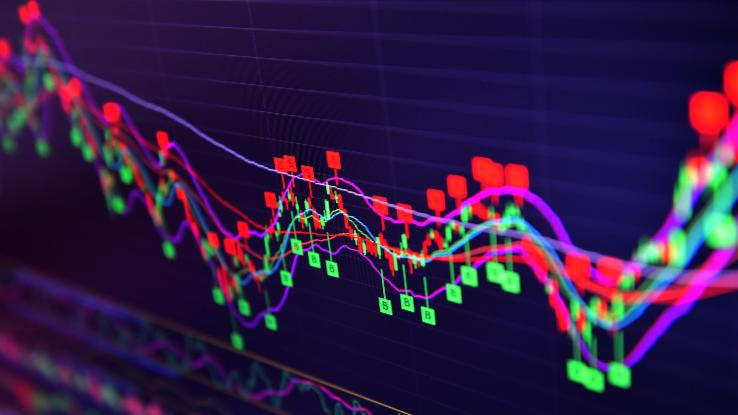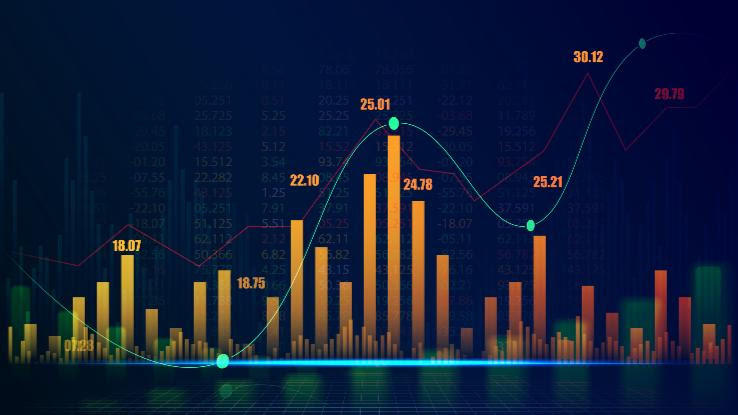Where Do You See Yourself in the Future

Like having options? Gone are the days of trading simple, singular stocks. Within the world of the stock market, there's now a variety of ways to go about investing — and there are plenty to suit investors of all skill levels, too. You can purchase things like stocks, exchange-traded funds and mutual funds or go a different route by trading something called futures.
Futures can be a bit intimidating to the new investor, not just because of their name — but also because many of them have become incredibly expensive to trade, and that's understandably off-putting for a lot of beginners. That's why CEM Group recently introduced something called micro futures and E-micro futures. These types of financial contracts are surprisingly easy to understand, and they can present a more affordable entry option for investors who are new to trading on the futures market. Here's what you need to know.

Before getting into what micro futures are, it's important to understand the overall concept of futures contracts in general. While futures and options can cover a wide range of investments, the type of futures we're focusing on here are called stock index futures.
To make a complex idea very simple, stock index futures allow you to bet on whether a certain stock market index will go up or down. You can choose from futures that focus on a number of specific indexes, but the most common follow the performance of one of the four major indexes:
- The S&P 500
- The Dow Jones Industrial Average
- The NASDAQ 100
- The Russell 2000
To determine the value of a stock index future, you multiply the value of the index it follows by a figure known as a multiplier. For instance, a standard multiplier for the S&P 500 index is $250. So, to calculate how much an S&P 500 index future is worth, you could calculate the current price of the S&P 500.
In the past, the S&P 500 index has closed at $4,509.37. Thus, a futures contract that followed it would be worth $4,509.37 x $250, or $1,127,342.50 at that time.
Why Do People Trade Index Futures Contracts?

The idea behind trading futures — and a big clue about their name — goes back to the fact that you don't actually have to pay the total amount they're worth until a date in the future. The hope is that, by that time, your contract will be worth more than it was when you paid for it.
If you think the index that your future tracks will go up, you can go "long." If you think it will drop, you can go "short." Either way, if your bet turns out to be correct, then you stand to make a significant amount of money. If the contract is worth more than it was when you purchased it at the time it expires, the seller will be required to pay you the difference.
That said, things can also go the opposite way. If it turns out that your bet was wrong, you'll need to pay the difference to the seller if you still hold the contract when it expires. The good news is that, if you can tell things probably aren't going to pan out for you, you can sell the contract before the expiration date — but often at a cheaper price than what you paid for it.
As you can see from the example above, most traditional index futures can be prohibitively expensive for casual or beginning investors. That's where micro futures come in.
E-Mini Futures and Micro E-Mini Futures

Ultimately, there came a point when fewer and fewer people could afford to trade traditional index futures. The CME Group, one of the world's largest contracts exchanges, solved this issue by introducing new types of contracts called mini and micro futures.
E-Mini futures work exactly the same way as traditional index futures, except that their multipliers are smaller by one-fifth:
- The S&P 500 – $50
- The Dow Jones Industrial Average – $5
- The NASDAQ 100 – $20
- The Russell 2000 – $50
Micro E-Mini futures, or micro futures, also work the same way as traditional index futures but have even smaller multipliers of one-tenth:
- The S&P 500 – $5
- The Dow Jones Industrial Average – $0.5
- The NASDAQ 100 – $2
- The Russell 2000 – $5
As we calculated earlier, a traditional S&P 500 contract would be worth $1,127,342.50 in our example. An S&P 500 micro futures contract, however, would only be worth $22,546.85. The important thing to keep in mind is that, depending on the broker you use, you'll have to have a certain amount of money in your account in order to trade futures, as they tend to be a riskier investment strategy.
Some brokers will allow you to open a margin account, which means that you can borrow a certain amount of money from your broker in order to make bigger trades. Just keep in mind that you'll need to pay back the money if the trade doesn't pan out in your favor and you don't sell the contract beforehand. You want to avoid risking more than you can afford to cover.
What You Need to Know Before Trading Futures

In general, if you're brand new to the stock market, trading futures of any kind isn't something you'll want to jump into until you're sure you have a clear idea of the way they work. Trading even micro futures is best handled by investors with ample education and experience.
While some investors can make a great deal of profit from index futures trading, this is due to the fact that it tends to be a riskier investment strategy. You'll also need a substantial account balance before you can get into the futures trading game, as well as a thorough knowledge of when to sell as opposed to waiting for the contract's expiration date. Working with an investment advisor can be a helpful way to learn the ropes.
If you find yourself still holding a losing contract on the date it expires, you could be on the hook for a great deal of money. Make sure you understand how to set up a stop-loss before you begin trading futures so, even if you do lose money, you'll at least be able to put a cap on the amount.
As far as where to begin, there are now several platforms that offer micro futures trading, as well as educational resources to help you learn how to do it. Some of the top choices include:
- TradeStation
- Interactive Brokers
- TD Ameritrade
Micro futures present a great way to start when you're ready to begin venturing into futures trading. Until then, we recommend getting plenty of practice on a trading simulator. Simulators provide an excellent way to see how you'd perform — but without the risk.
MORE FROM ASKMONEY.COM
Where Do You See Yourself in the Future
Source: https://www.askmoney.com/investing/micro-futures-contracts?utm_content=params%3Ao%3D1465803%26ad%3DdirN%26qo%3DserpIndex
0 Response to "Where Do You See Yourself in the Future"
Post a Comment